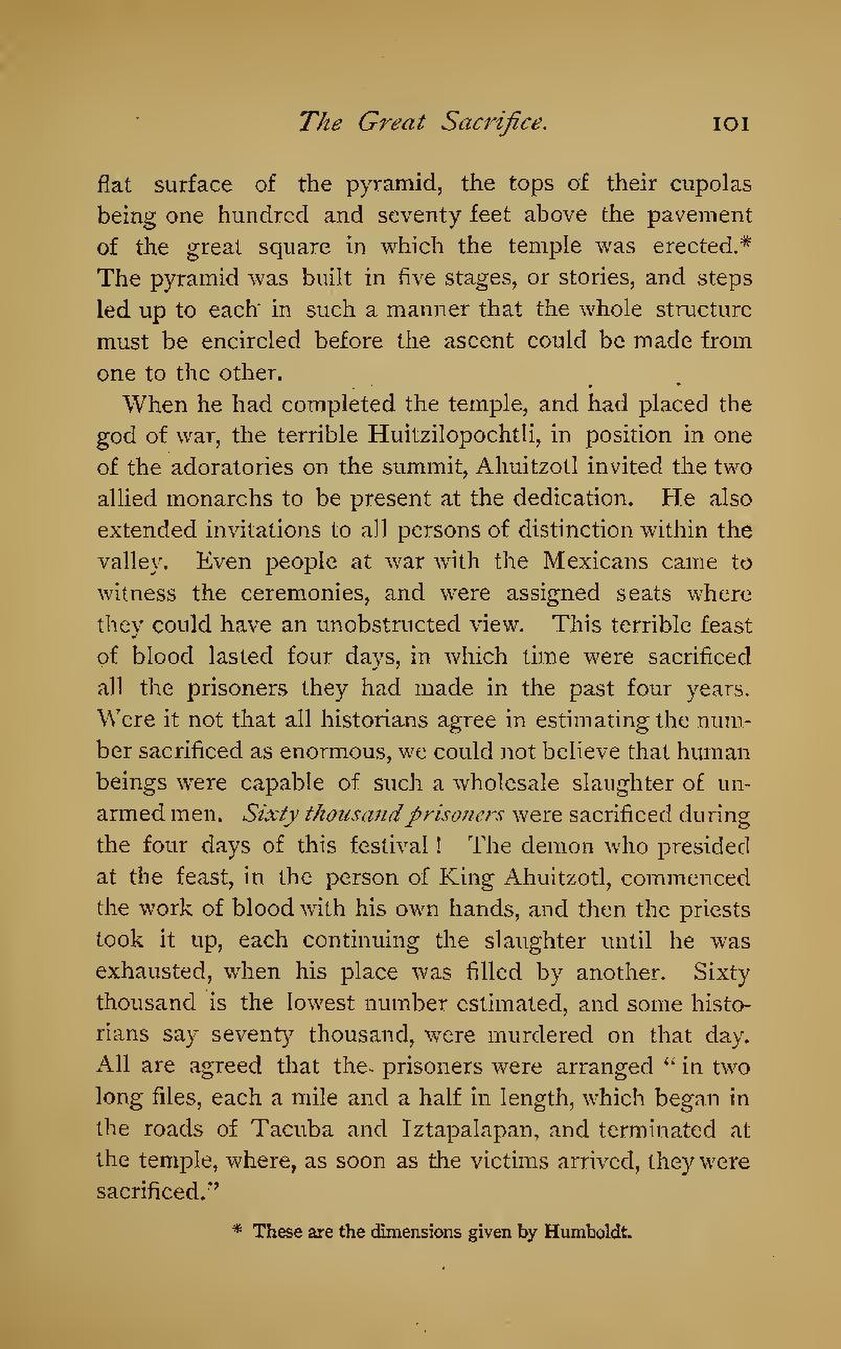flat surface of the pyramid, the tops of their cupolas being one hundred and seventy feet above the pavement of the great square in which the temple was erected.[1] The pyramid was built in five stages, or stories, and steps led up to each in such a manner that the whole structure must be encircled before the ascent could be made from one to the other.
When he had completed the temple, and had placed the god of war, the terrible Huitzilopochtli, in position in one of the adoratories on the summit, Ahuitzotl invited the two allied monarchs to be present at the dedication. He also extended invitations to all persons of distinction within the valley. Even people at war with the Mexicans came to witness the ceremonies, and were assigned seats where they could have an unobstructed view. This terrible feast of blood lasted four days, in which time were sacrificed all the prisoners they had made in the past four years. Were it not that all historians agree in estimating the number sacrificed as enormous, we could not believe that human beings were capable of such a wholesale slaughter of unarmed men. Sixty thousand prisoners were sacrificed during the four days of this festival! The demon who presided at the feast, in the person of King Ahuitzotl, commenced the work of blood with his own hands, and then the priests took it up, each continuing the slaughter until he was exhausted, when his place was filled by another. Sixty thousand is the lowest number estimated, and some historians say seventy thousand, were murdered on that day. All are agreed that the prisoners were arranged "in two long files, each a mile and a half in length, which began in the roads of Tacuba and Iztapalapan, and terminated at the temple, where, as soon as the victims arrived, they were sacrificed."
